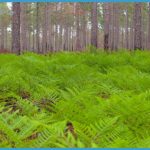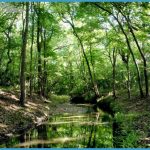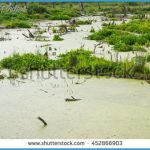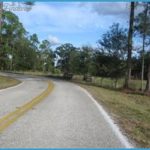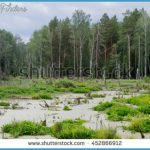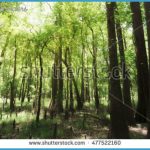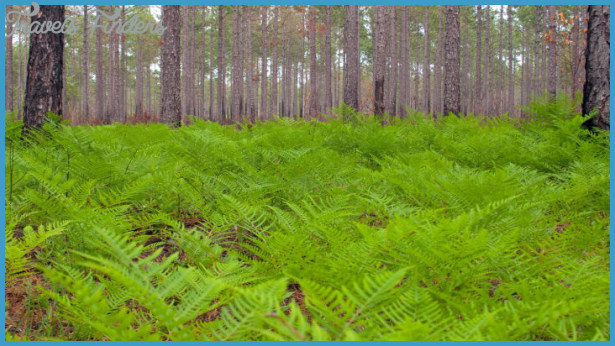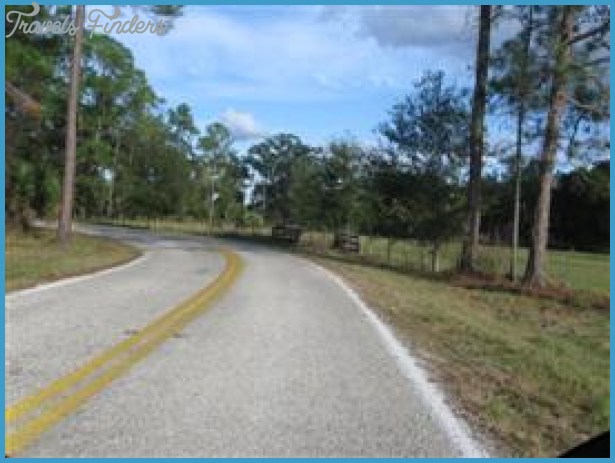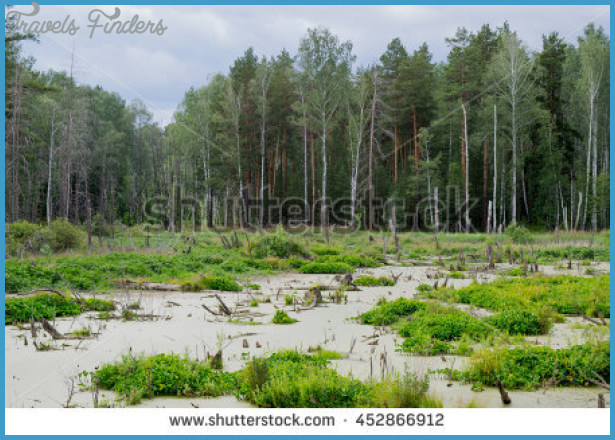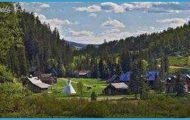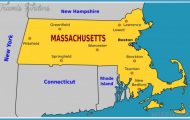Everyone is familiar with the Venus flytrap. Schoolchildren throughout the world recognize the famous plant. It’s a favorite among plant collectors. It has been the inspiration for everything from a television sitcom character (the disc jockey Venus Flytrap on WKRP in Cincinnati) to the title of a Stevie Wonder song (Venus Flytrap and the Bug). The movie Little Shop of Horrors featured a Venus flytrap named Audrey II that looked like it had overdosed on steroids. The list of flytrap references could fill a book. However, as well known and popular as the Venus flytrap is, few people realize that the plant is native only to a small radius around Wilmington, North Carolina, and grows naturally nowhere else in the world. That’s right, the Venus flytrap is a purebred Tarheel.
Among the best places in the state (which means the world) to see the Venus flytrap is in the Green Swamp, through which our route passes. The Nature Conservancy owns a preserve here, protecting more than 15,000 acres of superb pocosin and pine savannas. Of the most botanical interest are the savannas, on which grow the flytrap and other types of carnivorous plants such as pitcher plants, sundews, and butterworts, along with a rich variety of other plants. One study found more than fifty species of plants growing within a square meter of pine savanna. The savannas are dominated by North Carolina’s official state tree, the longleaf pine. Pine savannas once covered a huge swath of land that ran from extreme southeastern Virginia to Texas, but very few acres remain. The Green Swamp Preserve protects possibly the finest remaining example in the nation, earning its distinction as a National Natural Landmark.
Early-morning sunlight glistens on the wiregrass at Big Island Savanna in The Nature
Conservancy’s Green Swamp Preserve.
A little less than six miles north of U.S. Highway 17 you will see a small borrow pond on the right. Borrow ponds are created when road builders dig dirt for use on the roadway, leaving a depression in the ground that eventually fills with water. Beside the pond is a small parking area, from which a trail leads through the preserve. Keep in mind that it can get mighty hot and buggy here during the summer.
Timber companies have built canals and drained most of the original 200,000 acres of Green Swamp to create tree plantations. That’s mostly what you’ll be driving through between the Green Swamp Preserve and Lake Waccamaw. Lake Waccamaw is name to both a small village and a large body of water. The village consists mostly of shady lanes and charming mature homes on the northwest shore of the lake. The old train depot, now a museum, evokes the bygone days of the town’s importance on the railroad line for shipping forest products out and lake vacationers in.
The northwest and west shores of Lake Waccamaw are lined with private homes, but the northeast and south shores, and all of the lake itself, are part of Lake Waccamaw State Park. The park features camping, picnicking, hiking trails, and a popular swimming area. Exhibits in the modern visitor center interpret the biological diversity of the park. Lake Waccamaw is a Carolina bay (see Route 27), but it is a unique one. Most water-filled Carolina bays have tannin-rich water that is highly acidic. A natural limestone outcrop on the northern shore of Lake Waccamaw neutralizes its water, causing it to have more life-sustaining nutrients. As a result, Lake Waccamaw supports a diverse population of fishes, mussels, snails, and other aquatic life. In fact, several of the lake’s fish and mollusk species are found nowhere else in the world.
Grass pink, a member of the orchid family, grows on the longleaf pine savannas of the Green Swamp.
Start out from U.S. 17 in the community of Supply, north of Southport. Head north on NC 211. Drive 24 miles, then turn left onto NC 214. Drive 11 miles, then turn left onto Hallsboro Road. Drive 7 miles, then turn left to remain on Hallsboro Road. Drive 3 miles, then turn left onto NC 130 east. Drive 11 miles, then turn right onto Longwood Road. Drive 4 miles, then continue straight on NC 904 south. Follow it 5 miles to U.S. 17. (65 miles)
The carnivorous northern pitcher plant, a common inhabitant of the Green Swamp, traps its prey by drowning it.
Carnivorous sundews secrete a gooey substance that sticks to insects, trapping them onthe plant. Several species of sundew grow in the Green Swamp.
It is a straight shot along the railroad line to Hallsboro, where our route turns south. From here we follow near the western edge of Green Swamp all the way to U.S. 17. Most of the countryside is sparsely populated with farm fields and occasional glimpses of the swamplands. However, that is all changing rapidly, as Brunswick County counts among the fastest growing of North Carolina’s counties. This will be all too evident when you reach the end of the route if you decide to explore the nearby coastal areas of Calabash, Ocean Isle Beach, or Sunset Beach. If you do, a couple of good places to take a break from the beach crowds are the Museum of Coastal Carolina at Ocean Isle Beach and Ingram Planetarium at Sunset Beach. And the best way to end the day is to sit down at a gluttonous plate of fried popcorn shrimp, Calabash style.

